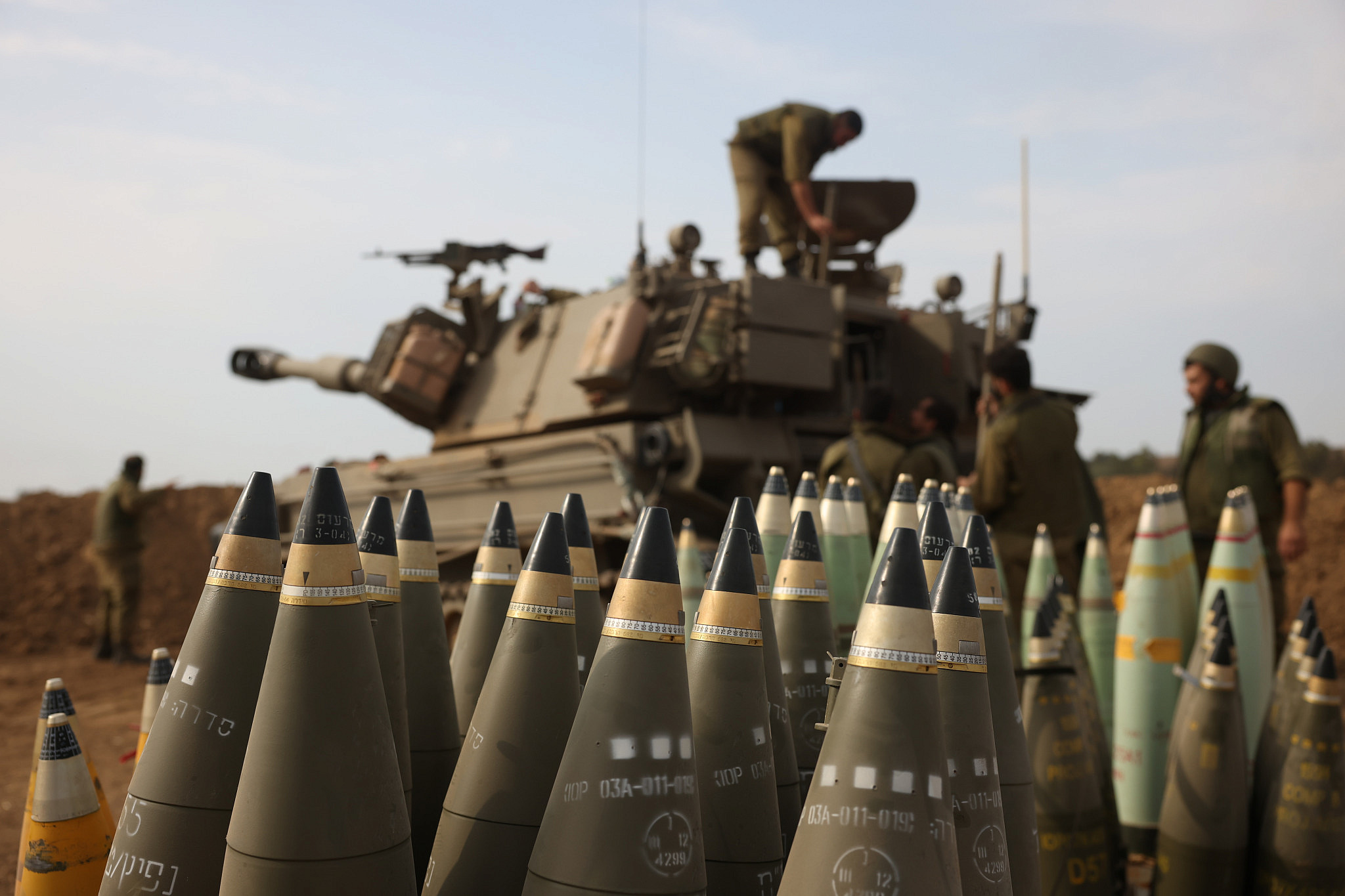Saturday, 6:30 a.m. Sirens are wailing across Israel’s south and center, but I only wake up in Tel Aviv when a friend — another photojournalist — calls. In my sleep, I can tell that something’s started at the Gaza fence; as a photographer, I’m used to getting ready fast, and I try to understand what’s going on while running to the car.
In recent years, I’ve covered every war that Israel has waged on the Gaza Strip, but we realize while driving south that something different is happening this time. On Route 6, we see smoke rising from a number of villages, but decide to continue to Sderot. Reports of militants invading a number of Israeli communities near the fence are starting to trickle out.
Without understanding the extent of what’s happening in Sderot, we drive toward the city but get stopped at a checkpoint. A police officer aims a cocked gun at us. We make a U-turn and head toward Ashkelon, where I’ve covered no small number of rocket attacks. The situation is far worse this time. The smoke in the distance makes clear there are a number of affected areas, some without enough rescue workers, or any at all; they need to prioritize where to go first. In less affected areas, residents are putting out fires by themselves with hoses.
One siren follows another. We take shelter next to a house in Ashkelon, before the family opens the door for us. They had been woken by the sirens, and the children are getting WhatsApp messages with videos — their provenance unclear — showing “terrorists roaming the city.” Some of us photojournalists try to calm them down, explaining that everything is happening in Sderot and further south, but we don’t really have any idea.
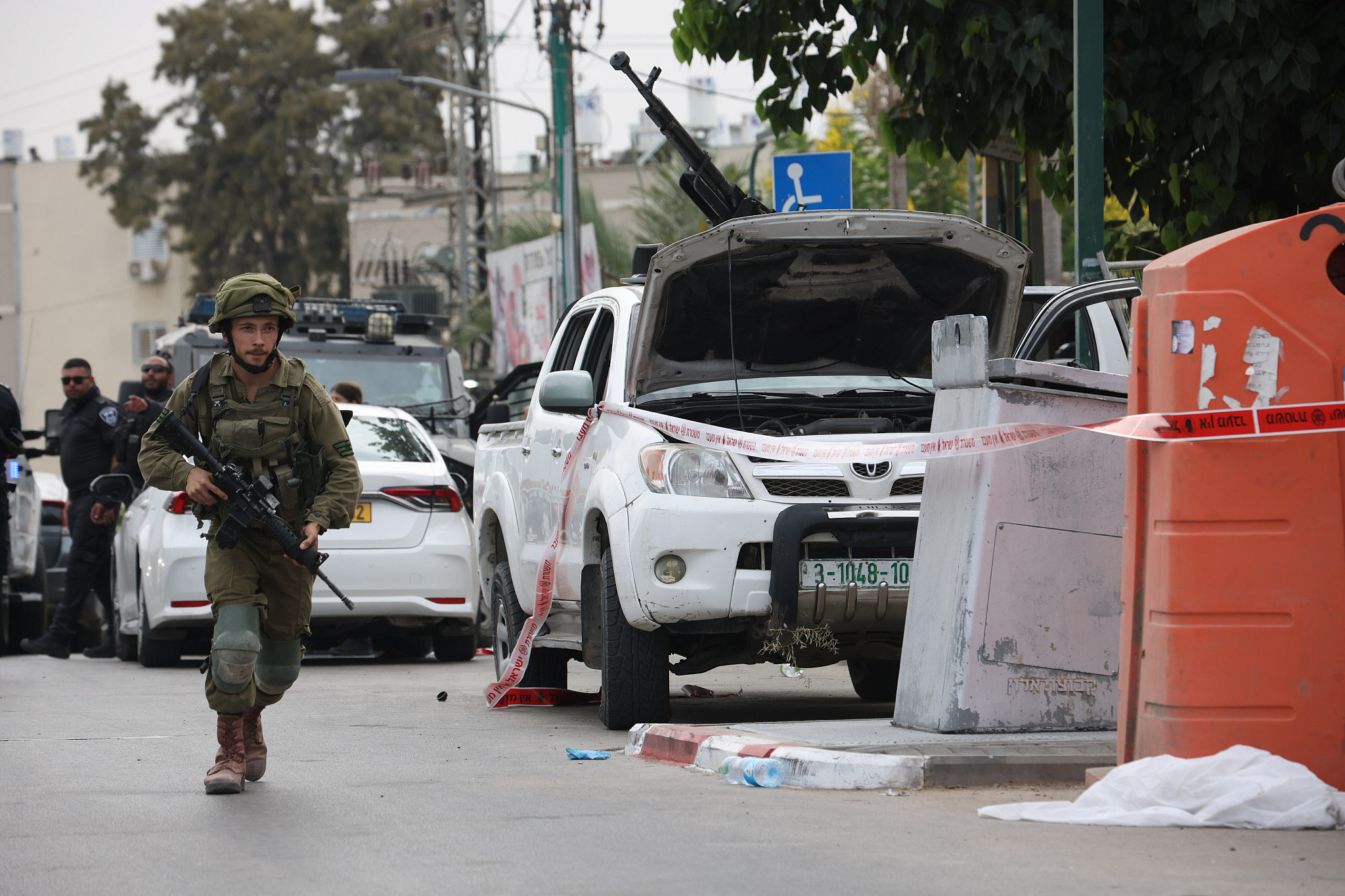
In the meantime, reports of militants opening fire on the Re’im music festival start coming in.
I meet several photographers and we decide to go to Sderot, where armed Palestinians have taken over a police station. Between taking pictures and taking cover amid the sirens, it starts to register that we’re facing something the likes of which we’ve never seen.
We see abandoned cars at the entrance to Sderot. Inside the city, there are dead bodies scattered on the sidewalk and the road. There are no police officers or soldiers in the streets; in a country where every suspected knife attack in Jerusalem is met by dozens of police officers in minutes, they are suddenly all elsewhere.
We hear gunfire and an explosion coming from inside the police station. A few officers are standing outside, next to an off-road vehicle with a green Palestinian license plate and a machine gun mounted on the back.
A group of photographers — there are eight car-loads of us at this point — decide to continue in the direction of Netivot on Route 35, the road taken by those who managed to escape the desert rave. Between Shaar Hanegev Junction and the small community of Yakhini, we see a lot of abandoned cars, some whose passengers escaped, others killed. We see more bodies on the road, next to belongings that make clear they had been camping.
Suddenly, we hear gunfire. At first, we thought it came from the Sderot police station, but it gets louder and sounds close by, and we realize it’s in front of us. We all lie on the ground. After several long minutes, with bullets whistling above our heads, shattering the windows of the cars next to us, military forces arrive and position themselves behind the median separating two lanes. We crawl over there, too, to take safer cover behind the concrete.
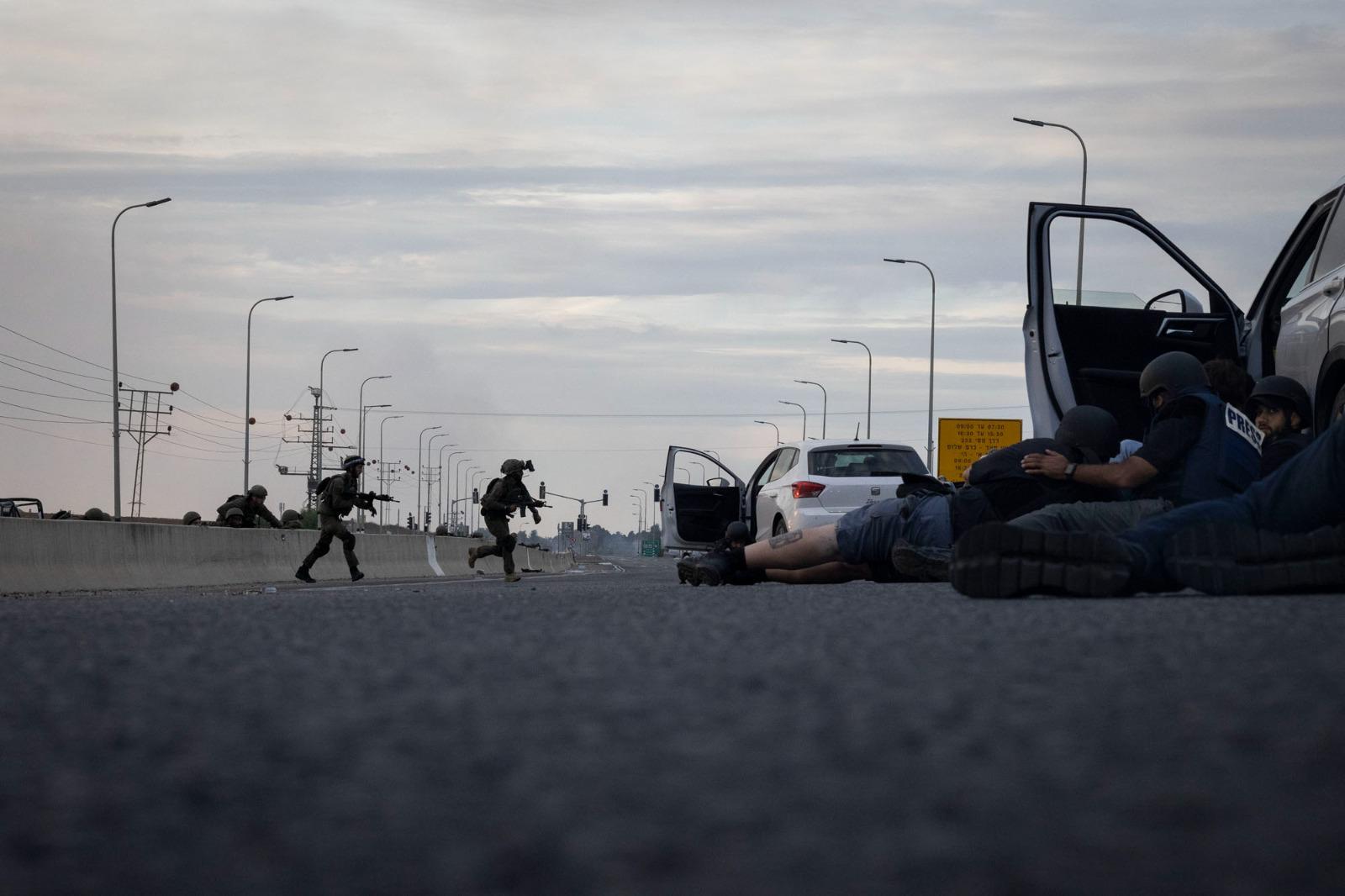
The cellphone reception in Sderot is down: it was out for most of the day, either due to a power cut or because the authorities purposefully took it down in order to prevent the Palestinians who infiltrated from communicating and distributing footage. Only later that night do I watch footage from the party and elsewhere, and understand fully what took place.
A lot of people have asked me in recent days how I’m able to stand all the horrors that we documented. There’s no clear answer to that question, aside from the fact that it helps to work alongside friends. For me, it’s precisely being on the ground, without needing the mediation of television or social media, that helps with processing the events in a slightly less traumatic way, because I saw these things myself. As awful as they may be.
A sign war is really starting
The next day, I head back south and discover that the situation is far from under control. There are a few soldiers and police officers in the streets, and the echoes of gunfire and explosions indicate that battles are ongoing. Tanks are making their way through the streets, furrowing the road as they go. It’s always a bad sign, a sign that a war is really starting, when tanks drive directly through the streets this way — it shows that there hasn’t been enough time to load them onto a transporter.
The battle for Sderot police station ended at dawn, and military bulldozers are already starting to destroy the building. The bodies of Palestinian militants are piled up outside, their weapons lying next to them.
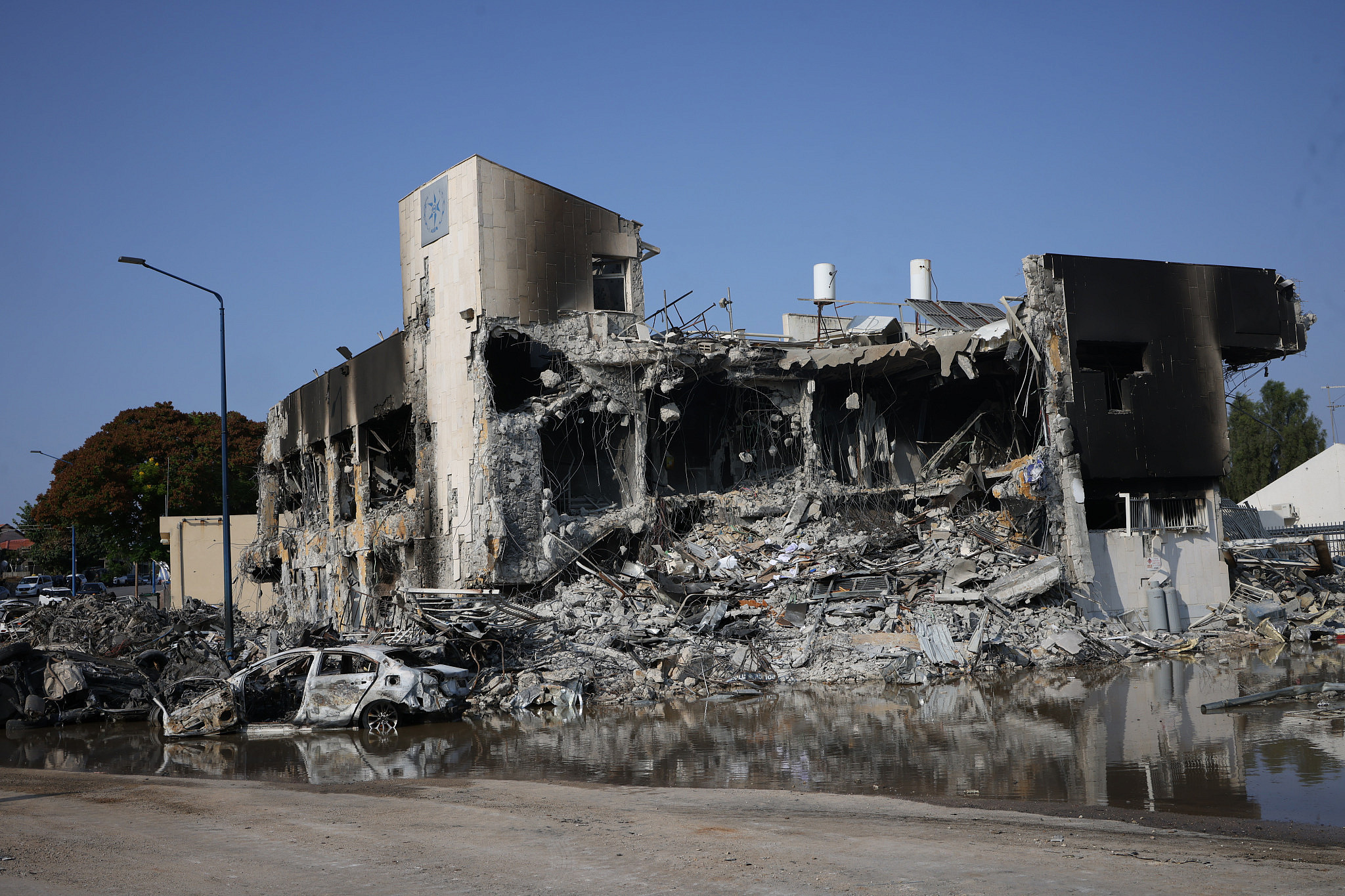
Although most of the bodies of Israelis had been extracted from the scene, the bodies of Palestinians — wearing tactical vests and with ammunition strapped to them, and sometimes their weapons beside them — were left on the ground for days. A lot of equipment was found inside and next to militants’ cars: walkie talkies, batteries, food and drink, and other evidence of a well-planned assault.
The days are starting to blend into one another. It’s hard to remember when the war began, but everyone I meet — enlisted soldiers, reserves, and citizens — is preoccupied with the question of how this happened, starting with the intelligence failure, then the breakout from Gaza, and finally the delayed response from Israeli forces. It’s hard to write about the extent of the failure, but aspects of it become apparent with each visit on the ground. The government and the army say they will answer these questions “after the fighting,” but it’s hard not to ask them at this moment.
Throughout the week I tour the sites of rocket impacts, military staging areas, and communities reopened after they are returned to Israeli control. In Ashkelon’s Old City, where many buildings lack a secure room or nearby public shelter, a rocket struck the first floor of an apartment block and smashed its divided units into a single jumble of rubble.
In the south, a security official explains that this Israeli assault on Gaza will be longer than usual. He notes that the Gaza fence is effectively out of action given the dozens of breaches, and that as of the start of the week, dozens of cells of armed Palestinians are roaming the area. Asked about the failure that occurred, he tells me he has no answer. It seems no one does.
For a while, it appears that the IDF Spokesperson’s Unit is also not functioning, meaning no official visits are arranged for photographers and journalists striving to reach the murder scenes. On Tuesday morning, a group of us arrive independently to the area of the Re’im music festival, where 260 young people were murdered and many more abducted on Saturday.
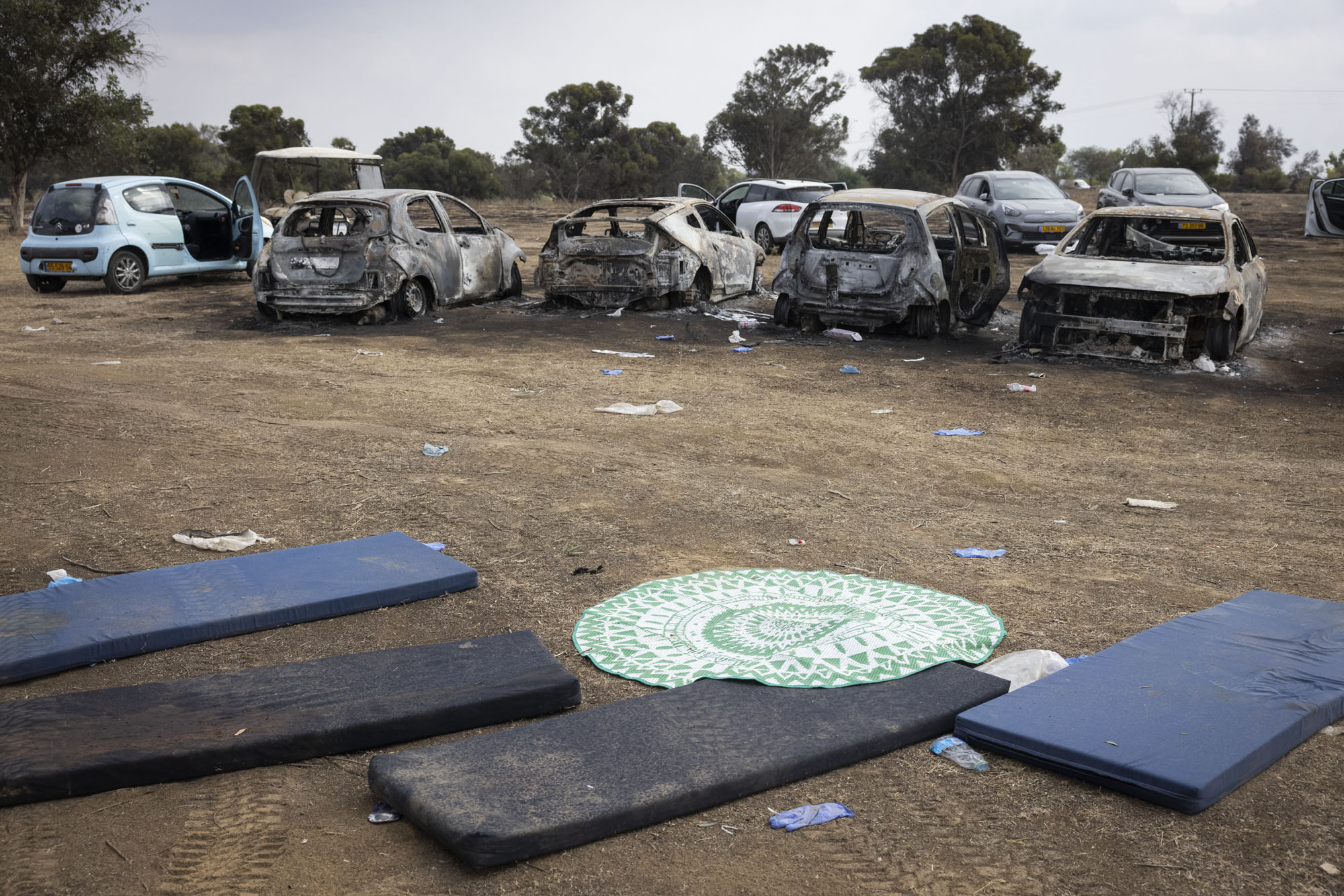
Already on the way there we had passed hundreds of abandoned cars on the side of the main road, some of them burned. Many of them had been spray-painted with an “X” and a date, signaling that the security forces had examined them. At the festival site, there is still a security post at the entrance, the campsite is still standing, as is the bar, and at the center there is a stage and microphones. There are also still mats scattered about, as well as tents, hammocks, and personal effects. Everything is still standing, as if waiting for the party to recommence.
The bodies of the murdered have already been removed, but some of the dead militants are still lying on the ground. Soldiers pass by and search for remnants of ammunition.
As the day goes on, we are taken on an official tour of Kfar Aza, which saw extensive losses — the final death toll is still not known. IDF Major General Itai Veruv explains at the entrance to the kibbutz how the tour will go: “I don’t want to speak too much after fighting for 48 hours. What you’ll see is a massacre; I haven’t seen anything like it in 40 years of service.”
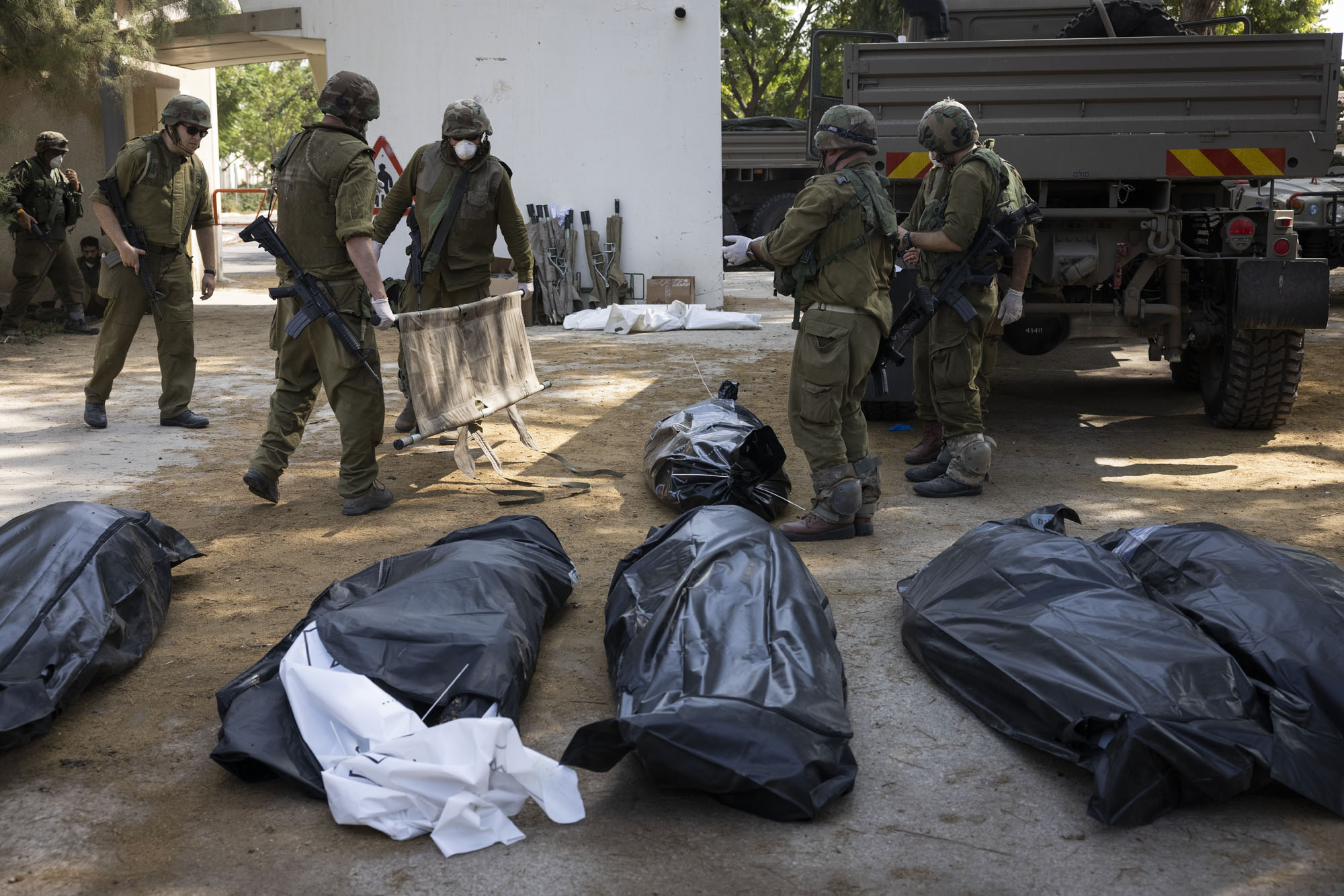
The scenes in the kibbutz are indeed extremely difficult. Much of it has been destroyed; mostly the youth living quarters. Security and rescue forces are clearing out bodies and weapons, still searching the area. Many were killed in their beds, or as they were just waking up. The breach in the gate from which the Palestinians entered hasn’t been repaired, and a trail of burned vehicles, weapons, bodies, and personal belongings show the path that the attackers took inside the village. In the background, behind the village gates, smoke rises from Israel’s ongoing attacks on Gaza. When the rocket sirens aren’t wailing, you can hear the fighter jets and artillery.
The following day, with the reports from Kfar Aza taking hold around the world, we join another press tour — this one in Kibbutz Be’eri. There, too, the damage is considerable: more than 100 killed, homes destroyed completely from rocket fire, and off-road vehicles, weapons, and bodies scattered everywhere.
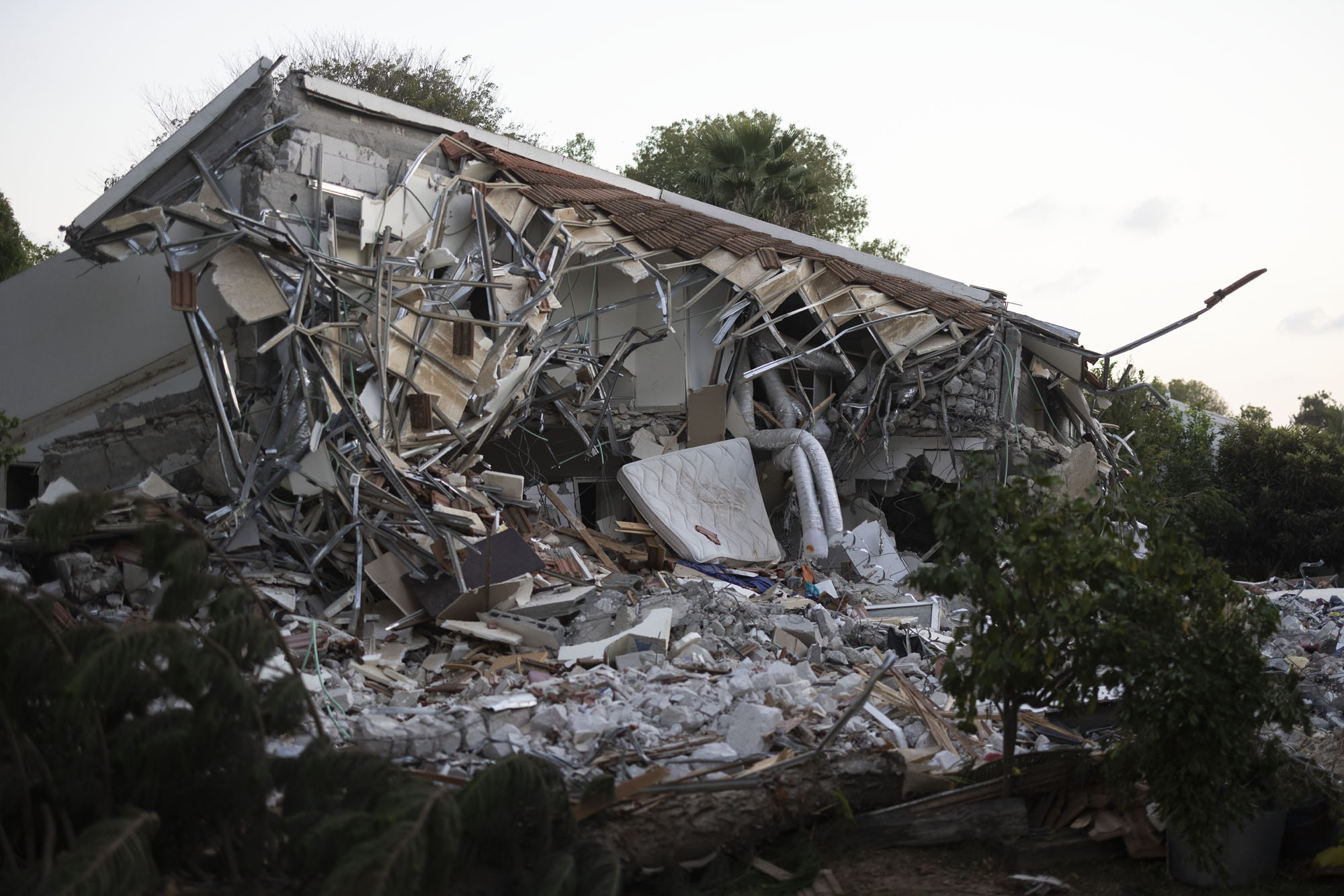
Some of the homes have been left open, and from the outside you can see how a regular morning was abruptly cut off: food on the table, a fan still whirring, laundry hanging on a line, photographs on the fridge. Here, as in Kfar Aza, even amid all the destruction, it’s hard to fathom the extent of the horror.
All week, I’ve been getting messages from friends and families stuck in their homes and unable to get to the south, searching for any information about what has happened to their loved ones. In the first few days, no one from the authorities spoke to them.
A friend from Gaza recounts that a family member of his, a teenager, got through the fence after the assault began, like many young people who weren’t part of the organized assault — since then, he’s been missing. A security official said that a lot of the Palestinian dead are not fighters but youth who entered through the breached border fence. One report from Kfar Aza shows a number of them standing in a line with bikes and camping equipment that they stole, heading back into the strip.
Paying the price for crimes they didn’t commit
The very first news event that I photographed was in 2003 at the age of 17: a Palestinian blew up a bus full of passengers in Haifa, murdering 23 people, many of them quite young. I heard about the attack through friends at school, rushed home, got my film camera, and headed to the scene.
Before I left, I managed to call my mother to update her, and she told me not to go. But when she realized I was going anyway, she just asked me to be careful. It was a difficult scene — a burned out bus, bodies covered in shrapnel. When I went home later that evening, I discovered I knew two of the victims, who attended the high school next to mine.
Those were the days of the Second Intifada, when 1,500 Israelis and 4,000 Palestinians were killed over five years. Former Prime Minister Ehud Barak’s mantra that “there is no partner” for peace among the Palestinians, alongside the horrible violence experienced in those years, led many to the conclusion that there is no solution to this conflict besides more and more violence, producing a sharp rightward shift in Israeli politics. The Zionist left almost completely disappeared, and, outside the radical left, for a very long time no one went out into the streets to protest or demand an alternative horizon.
Twenty years later, more Israelis and Palestinians have been killed in a matter of days than in any of those five years. The public’s position has shifted even more dramatically to the right, if that were possible. As my colleague Orly Noy wrote earlier this week, even many on the left are demanding revenge and calling to “erase” Gaza.
Most read on +972
In conversations with dozens of residents in the last week, it’s not clear to me which is stronger — anger at the government, including from Prime Minister Benjamin Netanyahu’s supporters, or the desire for revenge. The government, in any event, has decided to act on the latter. The smoke from Gaza recalls the terrible war of 2008-9, but the number of dead in the strip has already matched that war. With the fear that every rocket siren brings, and our race to shelter, it’s impossible not to think about those on the other side of the fence — without shelters, sirens, or electricity — paying the price for crimes they didn’t commit.



